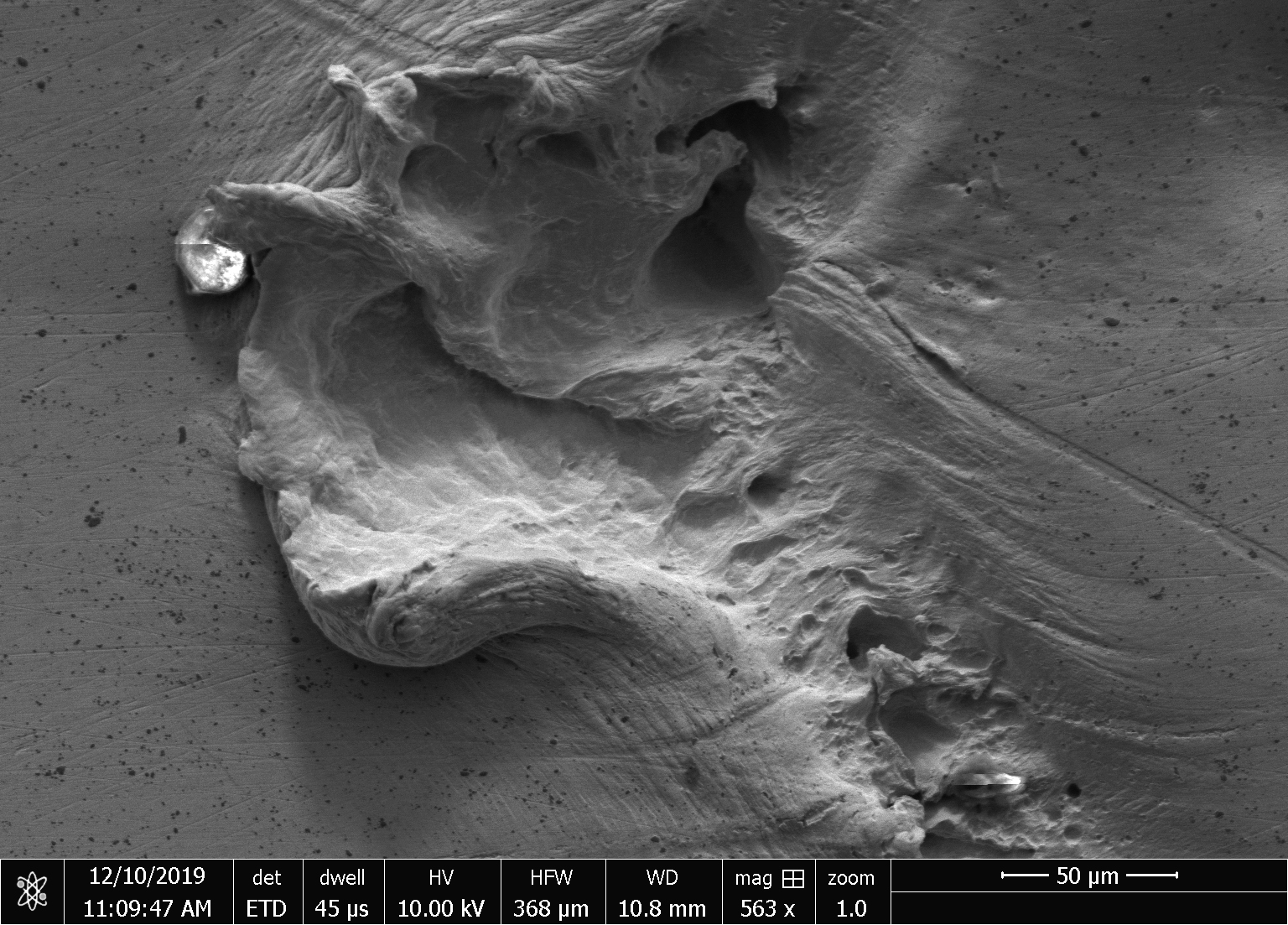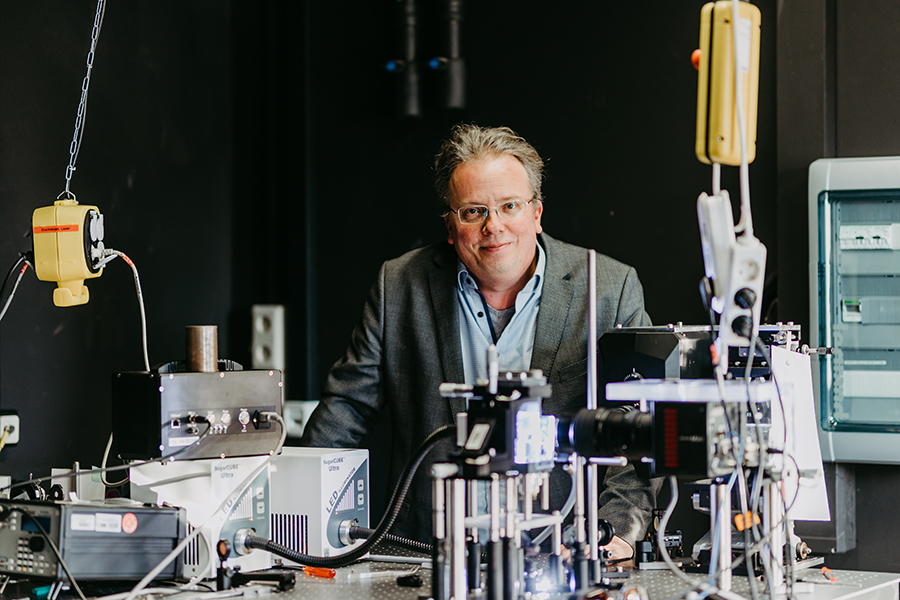Bubbles protect steel
Material scientists at Otto von Guericke University Magdeburg have developed a novel method that in future will help to prevent damage caused by liquid flows, known as cavitation erosion, to ships’ propellers and turbines.
This erosion, which even effects steel, is caused by so-called cavitation bubbles. When liquids flow at high speed or an object moves very quickly through a liquid, specific bubbles form on surfaces, for example of ship’s propellers, in pumps or nozzles, and even on artificial heart valves. This physical effect is described as cavitation. The bubbles that are formed implode into one another after a short time. This produces extreme pressures of over a thousand bar, which equates to one thousand times ambient pressure. These forces lead, on a fast-rotating ship’s propeller for example, to constant erosion of the material.
 Electron microscope image of a silver surface damaged by cavitation in water. (credit: Dr. Fabian Reuter / Uni Magdeburg)
Electron microscope image of a silver surface damaged by cavitation in water. (credit: Dr. Fabian Reuter / Uni Magdeburg)
“Material damage through cavitation bubbles is a very old and above all still unresolved problem in machines and equipment,” explains physicist Prof. Dr. rer. nat. Claus-Dieter Ohl from the Faculty of Natural Sciences. “At the beginning of engine-powered transatlantic shipping in the 19th century, it was noticed that the ships’ propellers only survived a few crossings.” According to Professor Ohl, although many groups across the world have worked on controlling cavitation and the damage that it causes, thus far material scientists have not managed to find alloys, for example, that are able to withstand the erosion caused by cavitation. “For this reason we took a different approach with our research and instead changed the surface structure rather than the material itself, in such a way that the cavitation bubbles are unable to even make contact with the surface in the first place and are therefore unable to destroy it.”
The new method devised is based on deliberately changing the surfaces in such a way that the cavitation bubbles are repelled by them. To do so, specialized cavities are created onto surfaces – silicon wafers in this case. The specific structure of these cavities leads to the entrapment of air inside them even on their immersion in wetting liquids. As a result, a soft “shield” of bubbles is realized on the surface on immersion in water. Now, when the cavitation bubbles come close to this “shield”, they are repelled and hence prevented from eroding the material. This repulsion has been demonstrated both experimentally and using mathematical models by the OVGU Team for the surfaces developed by Professor Himanshu Mishra’s Group at the King Abdullah University of Science and Technology (KAUST), in Saudi Arabia.
Nature as a model
According to the researcher leading the work in the Department of Soft Matter in the Institute of Physics, the greatest challenge was to realize the entrapment of air bubbles on the surfaces without using chemical coatings. “Here we copied a trick from nature. The cavity openings have a structure similar to the chest area of sea-skaters (Halobates germanus), rare insects dwelling at the sea-air surface. The sea-skater needs stable gas bubbles on its body for buoyancy in the case of accidental submersion. With this nature-inspired approach, we do not need chemical treatments to entrap air bubbles on immersion. Thus, this approach is translatable to any other material, such as steel.”
 Prof. Dr. rer. nat. Claus-Dieter Ohl from the University of Magdeburg in his laboratory (credit: Jana Dünnhaupt / Uni Magdeburg)
Prof. Dr. rer. nat. Claus-Dieter Ohl from the University of Magdeburg in his laboratory (credit: Jana Dünnhaupt / Uni Magdeburg)
The methodology has already been filed with the European Patent Office. The aim of the ongoing scientific collaboration is to use this method to develop a marketable process for cheaply treating surfaces that are at risk from cavitation.
The research findings have just been published under the title Mitigating cavitation erosion using biomimetic gas-entrapping microtextured surfaces in the internationally renowned journal Science Advances, an open-access supplement to the journal Science.
Pictures for download:
Photo 1 // Credit: Dr. Fabian Reuter / Uni Magdeburg // Photo caption: Electron microscope image of a silver surface damaged by cavitation in water.
Photo 2 // Credit: Jana Dünnhaupt / Uni Magdeburg // Photo caption: Prof. Dr. rer. nat. Claus-Dieter Ohl from the University of Magdeburg in his laboratory





